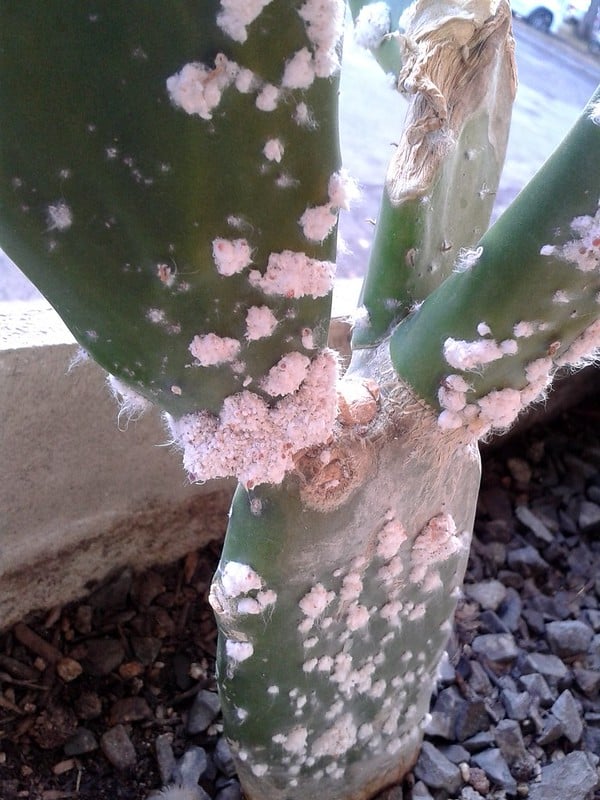Mealybugs are insidious pests that can wreak havoc on your cactus plants. These small, white, cotton-like insects can compromise the health of your cactus and, if left untreated, lead to severe damage. Fortunately, there are various strategies to eliminate these unwanted invaders swiftly and safely. Below, find a comprehensive guide on how to eradicate mealybugs from your cactus, ensuring its vitality and longevity.
Understanding the Nature of Mealybugs
Mealybugs belong to the family Pseudococcidae, and they are notorious for feeding on the sap of plants. These pests can be identified by their distinct white, fluffy appearance, which resembles cotton. They often hide in the crevices of the cactus, making them difficult to spot until the infestation becomes severe.
Mealybugs reproduce rapidly. A single female can produce dozens of eggs, leading to a full-blown infestation in a short time. Not only do they sap essential nutrients from your cactus, but they also excrete honeydew—a sticky substance that attracts other pests and encourages the growth of sooty mold.
It is crucial to act promptly at the first sign of mealybugs to prevent significant damage to your cactus. A vigilant eye and a proactive approach can save your beloved plant from decline.
Identifying Infestations Early
Detecting mealybugs early can be the difference between a simple remedy and a lengthy battle. Look for these warning signs:
- Visible Clusters: Check under the spines and in the plant’s joints for clusters of white, cotton-like clumps.
- Distorted Growth: Observe for changes in your cactus’s growth patterns. Stunted or twisted growth may be indicative of sap loss caused by mealybugs.
- Sticky Residue: Notice any sticky surface on the leaves or soil, indicating the presence of honeydew.
- Sooty Mold: Look for black mold on the surface, which is often a sign that mealybugs have been present.
Implementing Immediate Remedies
Once an infestation is confirmed, swift and effective action is paramount. Here are several methods to tackle mealybugs:
Insecticidal Soap
One of the most effective and safest ways to eliminate mealybugs is to use an insecticidal soap. This can be purchased commercially or made at home by mixing pure soap with water. The soap suffocates the mealybugs upon contact, disrupting their cell membranes and effectively killing them.
To use, spray the infested areas thoroughly, ensuring that the solution reaches the pests hidden in the crevices of the cactus. Repeat the application every few days for a week or two until the pests are gone.
Isopropyl Alcohol Solution
Isopropyl alcohol, also known as rubbing alcohol, is a potent remedy against mealybugs. It destroys their protective waxy coating and leads to dehydration. Creating a solution of equal parts rubbing alcohol and water can yield effective results.
Carefully dab this solution on the infected regions using a cotton swab. This method is particularly useful for targeted application, ensuring that you do not harm the surrounding healthy tissue of your cactus.
Neem Oil
Neem oil is another natural option that exists in the realm of organic gardening. Derived from the seeds of the neem tree, it disrupts the life cycle of mealybugs and other pests. To deploy neem oil, mix a few teaspoons with water and a few drops of dish soap to emulsify.
Spray uniformly on the cactus and surrounding soil. As a systemic pest repellent, neem oil will help manage mealybugs over time, offering long-lasting protection.
Preventing Future Infestations
Once you have successfully evicted the mealybugs, it is important to take preventive measures to avoid their return. Consider the following:
- Maintain Plant Health: A robust cactus is better able to withstand infestations. Ensure your cactus receives adequate sunlight, proper watering, and a balanced nutrient supply.
- Quarantine New Plants: Always isolate new plants for several weeks before introducing them to your existing collection. This will allow you to monitor for pests and ensure a healthy environment for your cacti.
- Clean Your Tools: Regularly sterilize gardening tools and containers to eliminate any chance of cross-contamination from infested plants.
- Regular Inspections: Incorporate routine checks into your plant care regimen. Early detection is key to preventing extensive damage.
Embracing Integrated Pest Management (IPM)
A comprehensive pest management strategy is beneficial for long-term success. IPM involves combining cultural, biological, and chemical practices tailored to your specific environment. By nurturing beneficial insects, like ladybugs, and utilizing organic treatments, you can cultivate a healthy ecosystem in which your cactus can thrive free from mealybugs.
Conclusion
Dealing with mealybugs on your cactus can be a daunting task, but armed with knowledge and the right tools, eradication is entirely possible. By employing effective treatment methods and undertaking preventive measures, you can maintain the health and vigor of your cactus. A vigilant approach ensures that your cactus remains beautiful and thriving in your collection for years to come.





Leave a Comment